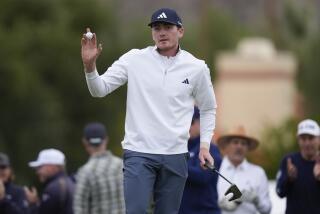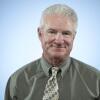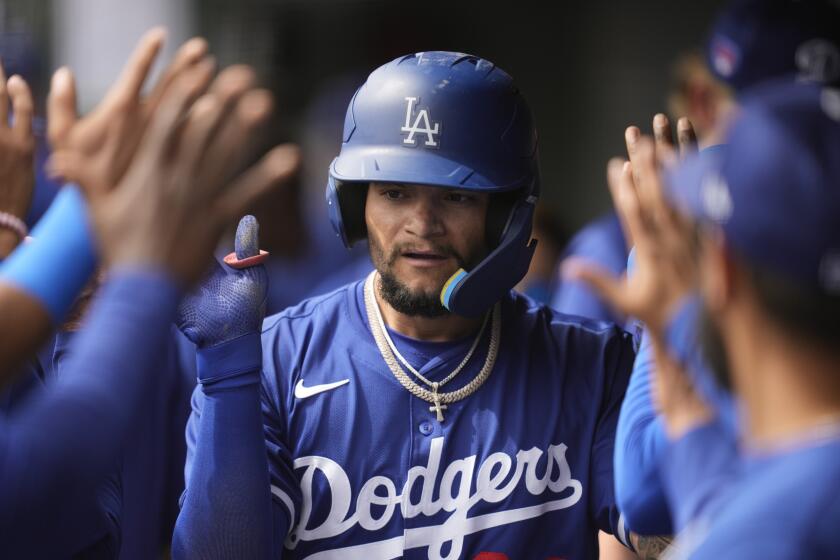Favorable conditions should yield plenty of low golf scores at CareerBuilder Challenge
It’s a simple formula, really. Take three golf courses in perfect condition, with smooth-as-table-top greens that invite aggressive short-iron shots. Toss in mild, sunny weather and a wide-open tournament field. It all adds up to scores so low that birdies are par for the course.
The CareerBuilder Challenge returns to the Southern California desert Thursday at the PGA West Stadium and Nicklaus Tournament courses and to La Quinta Country Club. The tournament, which began in 1960, doesn’t have quite the star power that it often did with Bob Hope in the title from 1961 through 2011; only three players in the top 25 of the world rankings are in the field.
But there are enough former major champions (14), former winners of this event (13), winners from the 2017-18 season (four) and players hungry for the 500 FedEx Cup points and $1.062 million that go with a victory to ensure that Sunday’s champion will probably be at least 20 under par.
“It’s a wedge and putting contest all week long. You have to set par at 68 each day to have a chance to be in the hunt,” Ryan Palmer, a three-time tour winner who finished second here in 2014, said of the three courses, all par 72.
“Every par five is reachable; you better shoot a couple of really low ones and keep it below 68 each day.”
How low does a winner need to go? Consider that two years ago, Phil Mickelson shot 68-65-66-68 and finished four strokes behind winner Jason Dufner.
Mickelson won the tournament in 2002 and 2004 and is making his 15th appearance in the event. He has 42 tour victories, but none since winning his fifth major — the British Open — in 2013. He’s making his 2018 debut this week.
Hudson Swafford is the defending champion; he became a first-time winner last year after he birdied three of the last four holes on the Stadium Course to finish at 20 under par. Had the weather been better — it was cold and rainy three of the four days — it’s likely the winning score could have been considerably lower.
In fact, on Saturday last year, the one day with clear weather, Canadian Adam Hadwin shot a 13-under 59 at La Quinta Country Club, the second player after David Duvall in 1999 to shoot a 59 in this event. Hadwin’s two-under 70 in the final round left him a shot behind Swafford.
Hadwin will play La Quinta again Saturday. He made par at No. 18 there last year, playing very conservatively to preserve the 59.
“If I’m in the same position on 18,” he said, smiling. “I’m gunning for 58 this year, not playing safe for 59.”

Several players talked about the need to capitalize on chances and pile up birdies. Swafford used a different approach.
“You can’t start thinking you’re moving backward if you make a par or a bogey on a par five or whatever,” he said. “You have to be patient, because you might make six or seven birdies in a row, and you never know when that streak is going to come.”
Jon Rahm, at No. 3, is the highest-ranked player at La Quinta. John Daly is taking a break from the PGA Tour Champions to play this week. Two-time Masters champion Bubba Watson, 2014 CareerBuilder winner Patrick Reed and 12-time tour winner Zach Johnson are also in the field. The players will team with a different amateur partner each of the first three rounds before Sunday’s finale on the Stadium Course.
Patton Kizzire, the only two-time winner this season, is coming off a victory in the Sony Open in Hawaii. But, like many players now in the Coachella Valley who competed last week, he’ll be glad to avoid the distraction that came just after 8 a.m. Saturday morning, when the false warning of an incoming ballistic missile was texted to cellphones in Hawaii.
“It was pretty spooky,” Kizzire said. “I knew there wasn’t much we could do and just tried to stay calm. We went down to the bottom of the hotel like most everybody else. Everyone felt helpless and was just hoping for the best. Nobody really knew how to react.”
Kizzire said the players simply tried returning their minds to golf once they got the all-clear after about half an hour, with varying success.
“I hit my first tee shot out of bounds,” Kizzire said. “I told my caddie, ‘This is a really weird morning.’ He did a good job of calming me down.”
More to Read
Get our high school sports newsletter
Prep Rally is devoted to the SoCal high school sports experience, bringing you scores, stories and a behind-the-scenes look at what makes prep sports so popular.
You may occasionally receive promotional content from the Los Angeles Times.







